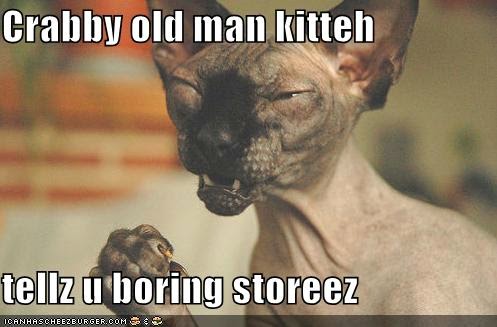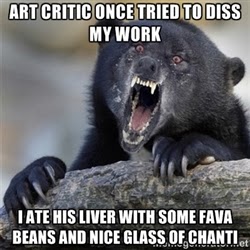I’ve been thinking about this topic a lot lately talking with artist friends. We’ve known each other for years. Many of us know each other from way back in our college days when we’d hang out in the Student Center with piles of books and art supplies and draw together for hours on end. Since then, we’re all able to see how we have changed from the wide-eyed artists who just loved to draw whatever struck our fancies to the more mature artists struggling with what mastery of the craft truly means, or just struggling to find the time at all outside of day jobs and other life pursuits.
I think we’ve all matured as people and as artists. We are no longer satisfied with just drawing whatever flits through our heads. Time is precious. Competition, for those of us who have gone pro, means that just drawing whatever we feel like is no longer good enough to push our work to the next level. Back in my teens, there was no pressure to sell art. There was no pressure to compete. It was purely art for art’s sake with little consideration for the pressure that is making a living off of art. Back then, I had no idea how this pressure would affect my work in the future.
These days as a more mature artist, it’s a constant struggle to not place pressure and preciousness on every little thing I draw. It can’t just be a doodle, it must be a MASTERPIECE! If it is not, I have wasted precious time on something that neither makes me money nor advances my skills in a larger way so that I can compete with the people in the industries I’m aiming for. I talked about the fallacy of this attitude in my last post (Stuck in ‘The Gap’) and I know this is the wrong attitude to have. Still, funny how that happens eh? I think it happens or has happened to everyone I know trying to make a living at art.
Another thing I’ve noticed is that I am much more concerned now with style than I ever was in the past. By style, I’m not talking about a specific visual style, ie. that Quirky Thing that Angela Does that makes someone recognize my work. Rather, I’m talking about a philosophy of art. What do I want my work to communicate? How do I want it to communicate these thoughts, feelings, and moods to my viewer?
Style, to me, is more about what I want my viewers to feel when they look at my work, more so than finding a ‘trick’ that makes my work unique. A huge positive of having this perspective later in my development as an artist is that I can now focus my work on a more deep and symbolic level than I ever could as the young, scatterbrained artist who loved to draw anything and everything just because I could.
Speaking of scatterbrained, I remember also how we all loved to learn and do so much, especially in school and didn’t have a sense of how quickly time gets sucked into a vacuum of Adulthood and Responsibilities (and doing laundry, never-ending laundry!). I wanted to be a comic book artist, a book cover artist, a novel writer, a fine artist, a mask-maker, an editor, an art consultant, video game writer, and a concept artist (I’d still like to do so many of these things!). Greg Manchess’ post on finding one’s audience really struck home for me. I need to pick one or two of these things and focus on getting good at them, then expand after I’ve gotten sufficiently badass at those two sets of skills. I realize also that’s not going to take a year, but years of my life. I have accepted this fate. Realizing a chunk of your life will be consumed by getting good at something is one heck of a stabilizer in this industry.
Go figure, I ended up choosing book cover artist and mask-maker as my two fields, in the end. The latter was quite a surprise! Leather mask-making came out of the blue as a talent I discovered for fun that quickly expanded into an income and side business. Life has a sense of humor like that, I’ve noticed. Maybe it was in the blood? (My father was a leather crafter in his younger days).
How I wish sometimes that I’d had a clearer focus on the one or two fields when I was young, but then perhaps I would not have learned the varied skills that I have now? Jack of all trades, master of none, as they say. But at least I now know what SEO means, how to use an Oxford comma, and how to mold cow skin into something beautiful. Surely, this means I can get into a trivia show at some point in my life?
Anyways, back to the present! Now, I seem to have found a sense of myself and my ‘style’. I have felt the first concrete thoughts about what I want my work to be like settling into the mold of the artist I want to be. I want my work to be like James Jean’s, to capture that sense of a dreamlike reality without verging into the Surreal. I want to tap the heart of fairy tales like he has with his work on Fables in a bold, mature way.
I want to bring narrative and emotional atmosphere to my work, like Waterhouse did with his paintings. I want to condense the aesthetic beauty and semi-realism of Mucha and Rossetti into something wholly new.
But I still want to be me. I want to be more than the sum of my inspirational parts, so to speak.
And I agree with Greg’s assessment that the only way we can define ourselves, at first, is to emulate those that we admire until we realize what makes our artistic voice different from those influences. We only find that voice with time, study, patience, and creating a whole lot of work to weed out what feels right and what doesn’t. To mature as people and artists is the only way these things can happen.
The time has never been better than now to really push my work and see what I can create as the artist I am now, an artist honed from those years of exploration into a keen observer of what I like and don’t like, what I want to be and don’t want to be.
There’s something coming with my work. I can just feel that bud of potential ready to blossom, if only I continue to nurture it! I’m so excited to see what happens next and that makes me extremely happy!
Thanks for sticking with me through all my ramblings, dear readers! I’ve been introspective of late in these entries, but perhaps they will help someone out there? They certainly help me. I can see the stepping stones on my mountain of Mastery becoming clearer the more I have these kinds of conversations with myself and with you all.
Here’s to the exuberance of youth and the discerning wisdom of maturity! Two essential ingredients to being the people that we want to be.





